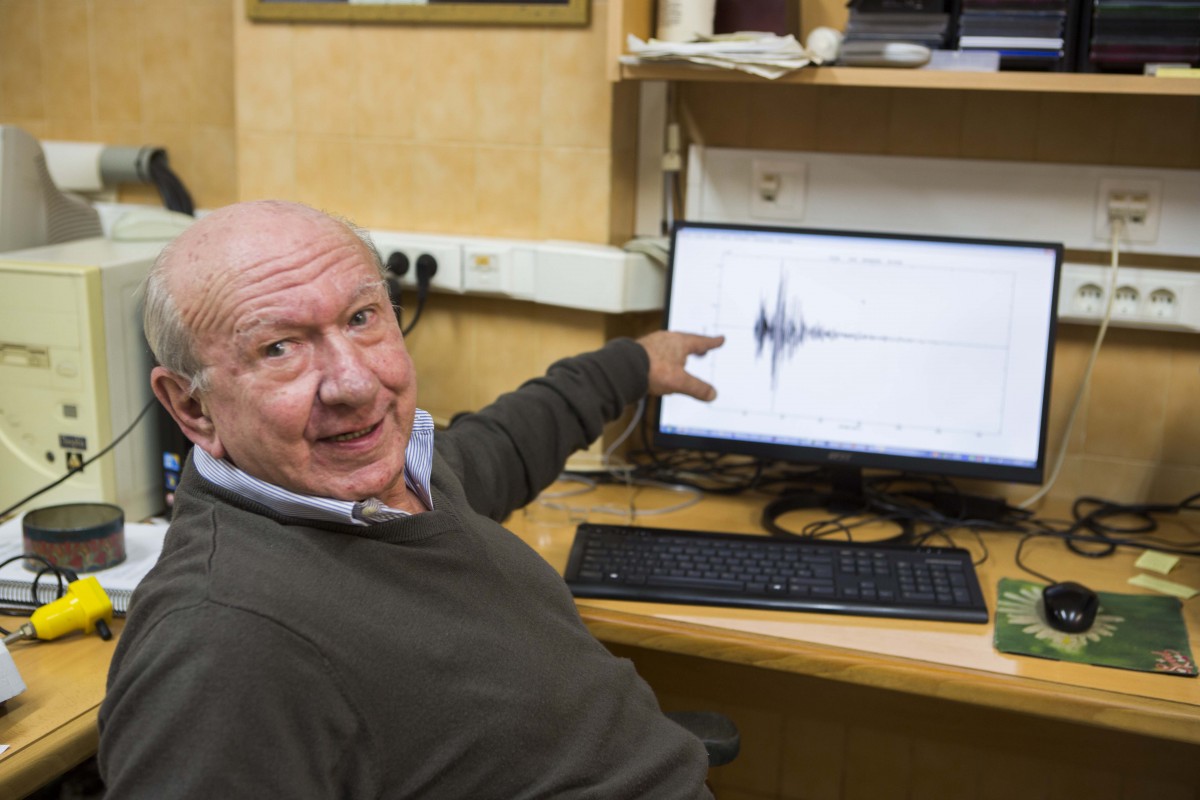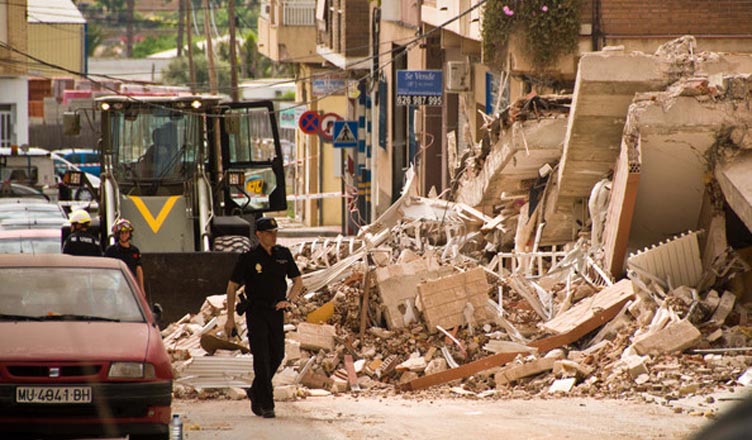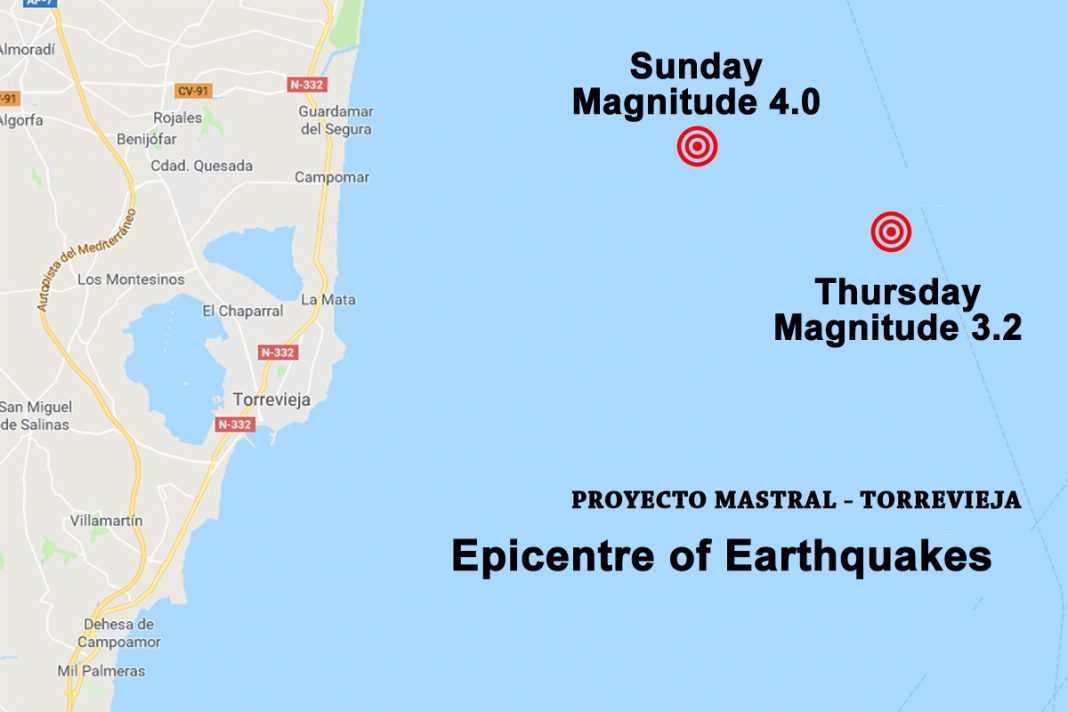While many people were still talking about last Sunday’s earthquake just off the coast of Torrevieja yet another quake hit the area on Thursday evening and although of a slightly less magnitude it was still felt in numerous homes across the region.
According to data from the Seismological Institute Thursdays tremor had a magnitude of 3.2 striking the coastline of the Vega Baja at 20.36 hours. The epicenter was located very close to that recorded last Sunday, in the sea, off the coast of Torrevieja, at a depth of 4 kilometers with the trembling lasting for just a few seconds.
The province of Alicante records an earthquake every four days, it is the area of the Iberian Peninsula that has the highest hazard index in terms of seismic risk next to that of Granada. There are approximately a hundred earthquakes every year, fortunately without material damage or, in recent years, any cost to lives.
Last Sunday’s tremor was more intense. Just off the coast of Torrevieja, ten kilometres deep, and with an intensity of 4 degrees on the Richter scale, and was felt in the municipalities of Alicante, Elche, Santa Pola, Almoradí, Torrevieja, Crevillent, El Campello, Guardamar del Segura, Mutxamel, Elda , Novelda, Petrer, San Miguel, San Vicente del Raspeig, Alcoy, Aspe, Benejúzar, Benidorm, Dénia and also in Cartagena and Murcia.

It generated a great deal of concern and uncertainty and is just one more reason why we should work toward improving our awareness, in the sense that we are in a critical area and we must be aware of what to expect without being alarmed
Also last week it was announced that one of the offshoots of the seismic activity in the region is confirmation that Alicante and Elche will be the first cities in the Valencian Community to have an emergency response system for earthquakes.
According to experts, this figure of an earthquake every three or four days is fairly constant, although it is impossible to know when an earthquake will occur and, of what intensity.
Indeed just last week the Second International Seminar on Sensitization of Seismic Risk in the province of Alicante was held at the Museum of Contemporary Art of Alicante (MACA), organized by the Seismic Risk and Engineering Group of the University of Alicante. The objective was to raise awareness and disseminate information in order to increase the resilience of Alicante’s society in the face of major catastrophes and, specifically, against those of seismic origin.
The province of Alicante has a seismic risk factor that makes it essential to ensure that the entire emergency and response system is properly prepared to deal with such a situation, whatever the intensity, according to local expert Sergio Molina. The seismologist says that we are simply experiencing the dynamics of the area, “the most common of which are the earthquakes of a magnitude between two and three and a half. We have numerous failures and it is simply the normal dynamics, “says the researcher.
The fault that released energy last Sunday was that of Bajo Segura, while the one that generated the earthquake of August 13, 2018, with an intensity of 4.2, was attributed to the Crevillent fault. The faults of San Miguel de Salinas and the one in Torrevieja are others that also recur from time to time.
“For me the most important thing is awareness. We are in an area of seismic risk but there are few people who aware of what we have to do, “says geologist and paleontologist Ainara Aberasturi, who insists that we must learn to cope with these situations.
In this sense he says that more simulations are needed in the cities so that we know how to respond. “It is not comparable, but in the earthquake of Lorca people died because they left home and the rubble fell on top,” says the director of the Paleontological Museum of Elche, who believes that people are still afraid to speak of earthquakes. At the same time, he demands that the regulations on earthquake-resistant constructions be strictly complied with, as he believes are now being done.
ESTIMATE OF THE AVERAGE OCCURRENCE OF EARTHQUAKES IN THE IBERIAN PENINSULA
* From 1985
MAGNITUDE
More than 7 1 every 150-175 years
6.1-7.0 1 every 25-30 years
5.1-6.0 * 1 every 10 months
4.1-5.0 * 1 every 22 days
3.1-4.0 * 1 every 40 hours
2.1-3.0 * 1 every 15 hours
To some extent the experts say that seismic movements such as those that occurred last Sunday are positive, since they are “small earthquakes because only a little energy is released, which is far better than when a lot of energy is released suddenly”.
For Sergio Molina, being ready is absolutely mandatory. “We cannot avoid them, but we can be prepared,” says the researcher from the UA, who is part of the team of scientists that will ensure the cities of Alicante and Elche become pioneers throughout the Valencian Community with Municipal Plans against Seismic Risk.
He says that both plans, definitive protocols on how to coordinate and face an earthquake, will be ready by the end of this year.
The Torrevieja plan meanwhile, according to the Alicante campus, has not yet been approved by the Valencian Security Agency but matters are in hand to speed up the procedure following the recent quake.
It was in 1829 that the greatest earthquake recorded in that area during the modern era took place. Of a magnitude between 6.3 and 6.6 and with epicenter in Torrevieja, the earth roared, costing the lives of 386 people. 47 churches and four bridges were destroyed along with over 5000 private properties.







[…] Related: Second earthquake hits Torrevieja in four days […]